
There may be help from afar.
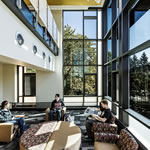
A trend in residence hall design, amenities, decor and furnishings is transforming dormitories into fashionable, stylish living spaces.

Hygiene and vandalism resistance rank as key concerns in today’s more collaborative K-12 restroom and locker room designs.
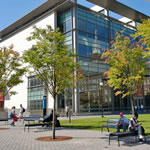
Crime Prevention Through Environmental Design offers design choices that can enhance safety and security.
Technology is modernizing the traditional instructional environment. The modern college student arrives on campus with more than just a suitcase in tow. An array of gadgets will also be on hand, including a tablet computer, a smartphone, an MP3 player, perhaps a laptop.
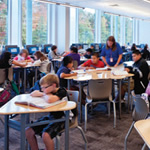
How flipping classrooms will alter classroom design, furnishings and technology to help students learn more.

Strong opinions aside, the truth is that many school districts outsource one or more services, and for reasons that include financial savings, as well as enhancing organizational flexibility, economies of scale, risk avoidance and access to capital invest
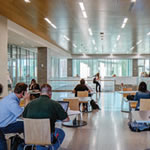
Collaborative learning involves teamwork, as does the designing of environments in which collaborative learning can thrive. Educational facility design experts know what works - and what doesn't - when it comes to creating collaborative spaces that allow for multiple uses and accommodate multiple learning styles. When creating collaborative spaces, keep the following in mind.
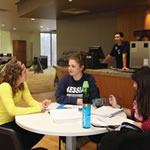
As with other campus spaces, fostering collaboration is a decisive influence in the design and function of todays campus libraries.
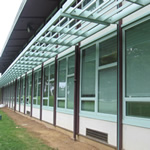
Creating a sustainable building envelope can be complicated, but worth it. Think about today and tomorrow. Educational institutions need to plan for sustainable management of their built assets both now and in the future. Building envelopes are part of that effort.

Affordable new access control technologies are changing the way students get into college buildings.

Will your school access control approach really stop a determined aggressor? Important information and observations on access control.
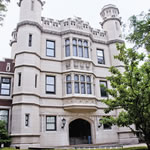
Keeping historically significant facilities weatherproof and energy-efficient while preserving architectural features takes care and planning.

Here are five metrics for establishing and tracking performance and customer satisfaction in your outsourced campus services.
So what is the solution to IEQ factors, acoustics, daylighting, thermal control, air quality and the effect each of these places on the other? The short answer is proper planning and coordination.
Federal law requires that schools prepare an individual educational program (IEP) for each student with a disability, providing related services known to include safety in an emergency. Codes stipulate warning systems and require regular drills for all st
While increased enrollment is widely regarded as a positive development, understanding ways to manage the influx of additional students, providing a high-quality educational experience, meeting academic goals, and staying within budget requires administrators and architects to minimize new construction and maximize existing space.
From projectors to iPads and iPod Touches, YouTube and teacher-created textbooks, multimedia lessons and the technology needed to run it are throughout New Braunfels Independent School District (ISD) in New Braunfels, Texas, from kindergarten
For the past decade, fire safety programs on college and university campuses have focused on keeping students safe while in campus residence halls and fraternity and sorority houses, buildings that are often most at risk. While from a numbers standpoint, campuses are relatively safe from the effects of fire, there are a number of small, too often deadly, fires in student housing on campus generally caused by student carelessness. There are a number of ways to enhance student fire safety.
Today, in college classrooms, instead of the silence of students taking notes in notebooks, one may hear the soft tapping of laptop keys. Technology in the classroom has been evolving at a rapid rate, leaving teachers and students sometimes running to keep up. Multimedia technology, which specifically refers to technology related to audio and video, is no exception.